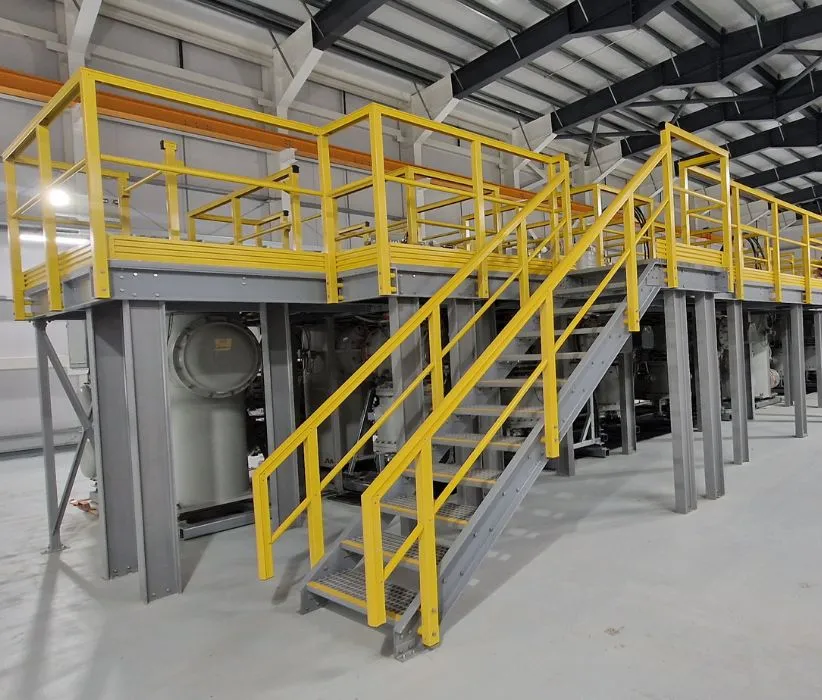loading...
- No. 9, Xingyuan South Street, Dongwaihuan Road, Zaoqiang County, Hengshui, Hebei, China
- admin@zjcomposites.com
- +86 15097380338
- Welcome to visit our website!
Innovative Solutions for Efficient Water Management with FRP Trench Drains
Understanding FRP Trench Drains Benefits and Applications
In the ever-evolving landscape of construction and infrastructure, efficient drainage systems play a crucial role in maintaining the integrity of structures and enhancing the functionality of outdoor spaces. One such innovative solution is the Fiber Reinforced Polymer (FRP) trench drain. This article will shed light on what FRP trench drains are, their benefits, and their various applications.
What are FRP Trench Drains?
FRP trench drains are linear drainage systems designed to collect and efficiently channel excess water away from surfaces. Made from a composite material that combines plastic with fibrous materials, these drains offer superior strength and resistance compared to traditional materials such as concrete or metal. The structure typically consists of a trench, grating, and a drainage pipe, all integrated into a seamless system.
Benefits of FRP Trench Drains
1. Corrosion Resistance One of the most significant advantages of FRP trench drains is their exceptional resistance to corrosion. Unlike metal drains that can rust when exposed to moisture or harsh chemicals, FRP materials do not corrode. This durability extends the lifespan of the system, making it cost-effective in the long run.
2. Lightweight and Easy to Install FRP trench drains are considerably lighter than their concrete counterparts, making them easier to handle and install. This can lead to reduced labor costs and faster project completion times. Their modular designs also allow for flexibility in installation, accommodating various site conditions.
3. High Load-Bearing Capacity Despite their lightweight nature, FRP trench drains are engineered to handle heavy loads, making them suitable for both pedestrian and vehicular applications. Their robust construction ensures that they can withstand the demands of busy environments such as parking lots, roads, and industrial areas.
4. Low Maintenance The non-porous surface of FRP materials minimizes the risk of clogging and debris accumulation. This feature translates into lower maintenance requirements over time, freeing up resources and reducing ongoing costs.
5. Customization Options FRP trench drains can be manufactured in various sizes, shapes, and colors, allowing them to blend seamlessly into different environments. This customization ensures functionality without compromising aesthetic appeal.
frp trench drain

Applications of FRP Trench Drains
Given their numerous advantages, FRP trench drains find applications across a range of industries
- Residential Areas These drains effectively manage rainwater runoff in residential settings, preventing flooding and water pooling in yards and driveways.
- Commercial and Industrial Facilities FRP trench drains are ideal for factories, warehouses, and commercial complexes, where heavy machinery and foot traffic demand robust drainage solutions.
- Parking Lots The load-bearing capacity of FRP trench drains makes them a popular choice for managing water on parking surfaces, reducing the risk of damage to vehicles and promoting safe passage.
- Institutional Projects Schools, hospitals, and recreational facilities also benefit from the installation of FRP trench drains, enhancing safety and functionality in outdoor spaces.
- Agricultural Applications In agriculture, FRP trench drains can be used for efficient water management, aiding in irrigation and reducing soil erosion.
Conclusion
In summary, FRP trench drains represent a modern and effective solution for managing surface water and preventing drainage problems in various applications. Their durability, lightweight nature, and resistance to corrosion make them an ideal choice for both commercial and residential projects. As the demand for efficient drainage solutions continues to grow, FRP trench drains are poised to play an increasingly important role in sustainable infrastructure development. By investing in these advanced systems, builders and property owners can ensure the longevity and reliability of their drainage solutions, paving the way for a safer and more efficient environment.
-
Transform Your Spaces with FRP Grating SolutionsNewsNov.04,2024
-
The Versatility and Strength of FRP RodsNewsNov.04,2024
-
The Excellence of Fiberglass Water TanksNewsNov.04,2024
-
The Benefits of FRP Grating for Your ProjectsNewsNov.04,2024
-
Elevate Your Efficiency with FRP Pressure VesselsNewsNov.04,2024
-
Welcome to the World of FRP Pressure VesselsNewsOct.12,2024
-
Unveiling the Future of Filtration: Why FRP Filter Vessels are a Game ChangerNewsOct.12,2024
